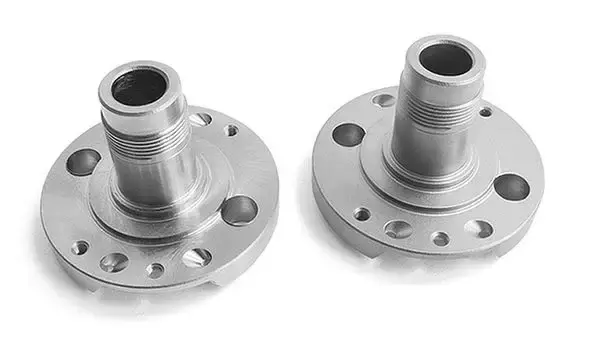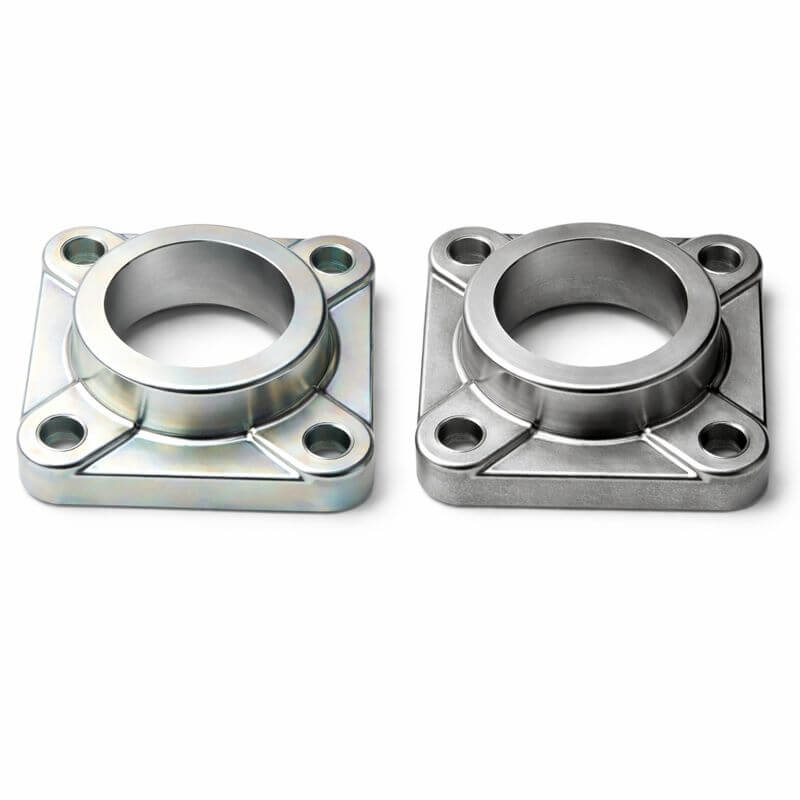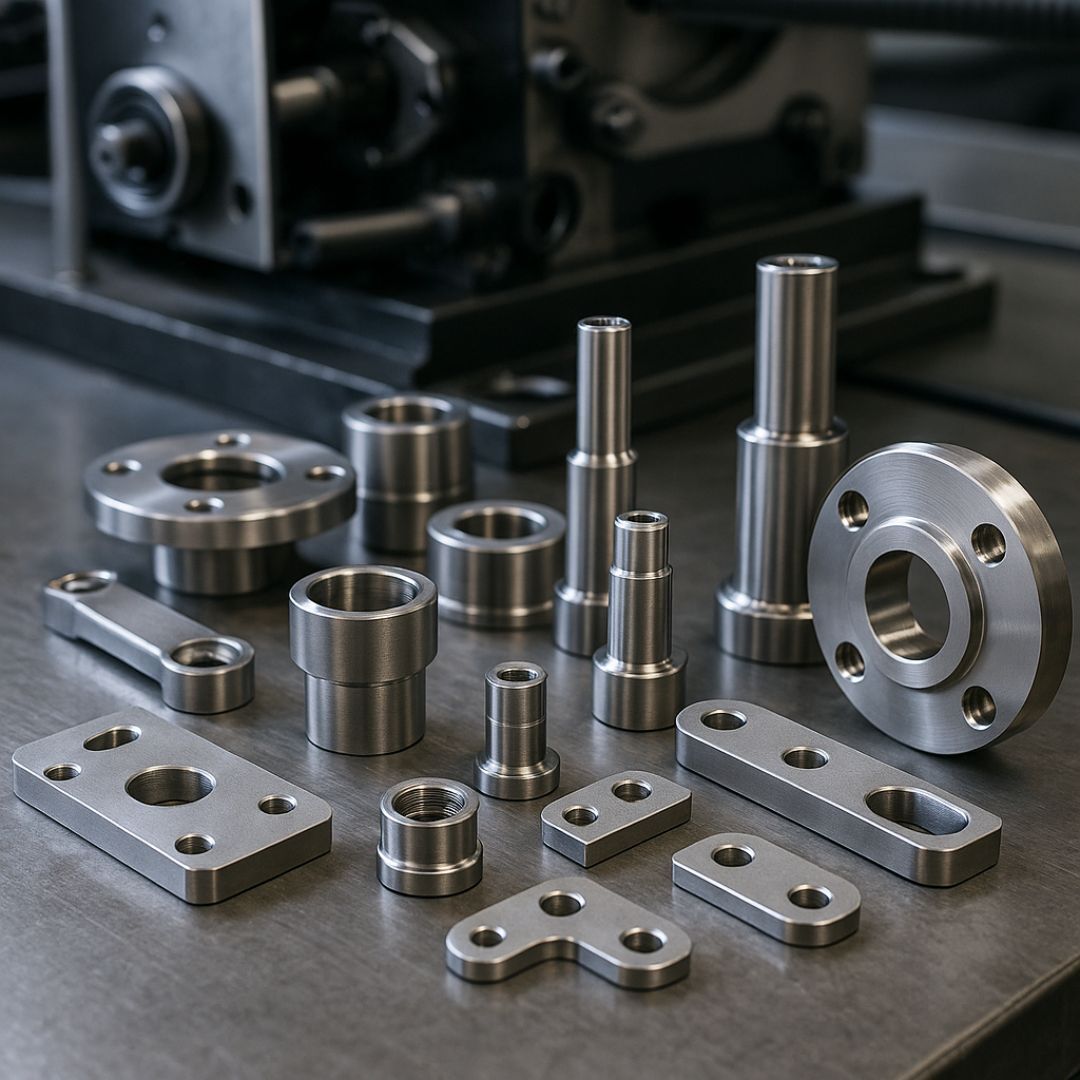3 min read
Galvanisation: Types of Zinc Coating, Benefits and Differences
Galvanisation is one of the most effective and widely used surface treatments for protecting steel and other metals from corrosion, oxidation and...

Shot peening is an essential mechanic process that is utilized in a variety of different industries. The idea behind shot peening is similar to the age-old process of blacksmiths that hammered metal over and over again to gradually improve its strength.
Shot peening improves the fatigue life of CNC machined metal objects and it’s the most effective technique to achieve hardened results. This is done as a cold working process to modify the metal. Shot peening essentially uses small shots to make small plastic deformations in the metal surface. It’s impossible to get such successful results through any other process.
It’s been proven through academic research studies and practical use that shot peening is unparalleled when it comes to hardening metal surfaces. This process will ultimately increase the life span of the metal and it is essential when building important machineries such as planes and cars.
With shot peening a variety of nozzles shoot small spherical elements (in Weerg we use the exclusive Lancet® nanospheres) at the surface of the metal. These elements are referred to as a ‘shot’. When they make contact with the metal the surface they create a tiny crater in the part of the metal that is under stress.


Yes. This result was proven in a series of NASA tests in 1982. These tests were a landmark in the industry. Following this, shot peening was used widely in the automotive industry. Because of its hardening effect it started to be commonly utilized for gears in cars and trucks by auto manufacturers. This study was a game changer because it caused shot peening to become part of the standard for auto manufacturing.
The process of using force on metal has been well-known in the industry since time immemorial for its power in improving fatigue life. Shot peening is simply the updated modern version of this age-old technique that has been used by blacksmiths for many years. Now, shot peening is used widely for essential metal components such as bearings, shafts, and gear teeth. On top of this, shot peening is also being used to improve and stretch out the life span of items such as gear tooth contact surfaces. No process can equal the power and strength of shot peening when it comes to metal.

Even if made with expensive machines loaded with the incredible Lancet® nanospheres (a creation of our R&D department) Weerg the shot-peening of your parts is completely FREE!
Shot peening doesn’t remove any material. The process simply makes small craters in the thin surface layer of the material. As already mentioned this process improves the strength and life span of the object. By making these tiny deformations in the item and causing the metal to compress, as a result the material is much stronger. Nothing is removed or added to the metal during the shot peening process. It’s the same except that the process will compress the surface. Thankfully, the shot peening process makes a variety of items safer and more long lasting, including vehicles, aircraft wings, and machine parts.

Shot peening also offers a significant aesthetic improvement of the parts.
Shot peening of aluminium is particularly beneficial because, although this metal is lightweight and versatile, it is softer than others. The treatment significantly increases fatigue resistance, reducing the risk of deformation or failure under repeated stress cycles.
It is widely used in sectors such as aerospace and automotive, where aluminium is chosen for structural components and parts exposed to vibrations. In addition, shot peening also improves the surface appearance, making it more uniform and compact.
When applied to steel, shot peening delivers its full potential. The process increases the surface hardness of the metal and improves its resistance to cracks, wear and premature failure. It is widely used for gears, drive shafts, springs, bearings and other components subjected to heavy loads and constant stress.
Thanks to the compressive layer induced by shot peening, treated steel achieves a longer service life, ensuring greater reliability in machinery, vehicles and industrial applications.
Unfortunately, many manufacturing processes result in a reduction of fatigue strength. These processes include plating, hardening, and welding to mention but a few. All of these processes are important but they will ultimately decrease the durability of the material. This is why shot peening has become an industry standard. It’s been proven time and time again in academic studies and also through its tried and tested use in factories around the world. Shot peening restores the majority of the fatigue strength that disappears during these other processes. When it comes to strength, durability, and safety, shot peening is leading the industry.
Sources and further reading
https://www.wheelabratorgroup.com/en-gb/my-application/application-by-process/what-is-shot-peening
http://citeseerx.ist.psu.edu/viewdoc/download?doi=10.1.1.654.8297&rep=rep1&type=pdf

3 min read
Galvanisation is one of the most effective and widely used surface treatments for protecting steel and other metals from corrosion, oxidation and...

2 min read
VALOI, a brand of the Finnish company Kameratori Oy and specialised in film-digitalisation systems for the home market, has started a collaboration...

2 min read
Stainless steel is one of the most widely used materials in modern industry thanks to its corrosion resistance, durability, and versatility.Among the...